Spiders are arthropods having eight legs. They have fangs that can inject venom and spinneret for spawning silk-like web used to capture prey. They do not have antennae but have the most centralized nervous systems of all arthropods.
Females of many species care for their young, like carrying them around or by sharing food with them. There are different species of spiders found all over the world, and some of the spiders are venomous.
Spiders tend to stay away from humans and only attack them when they feel threatened. Their guts are too narrow to take solid foods; hence they liquefy their food with digestive enzyme before consuming it. The lifespan of a spider is for two years, but large tarantulas can survive till 25 years. Spiders have hairs in their arms that acts as a sense organ to detect vibrations.
Check out the list of most venomous spiders in the world :
Top 5 Venomous Spiders
 Brown Recluse Spider: Native to North America, and having the scientific name of Loxosceles recluse, they are light to medium brown and may grow to 20 millimetres and more.
Brown Recluse Spider: Native to North America, and having the scientific name of Loxosceles recluse, they are light to medium brown and may grow to 20 millimetres and more.
On a flat surface, a brown recluse stance is usually with all legs extended. It lowers its body when alarmed and retreats its forward two legs into a defensive position.
They flee the area and always tries to avoid conflict, even taking up a lifeless position to avoid confrontation. But when they feel threatened, can inject potent haemotoxic venom.
The impact of the venom depends upon the quantity injected. Mostly found in footwear or clothing where they take shelter, and when worn, they feel alarmed and threatened.
The injection of this venom in the bloodstream causes necrosis. There are limited numbers of deaths reported by the bite of this spider. The site of the bite becomes swollen with a visible hole.
As this is haemotoxic venom, the effects start taking after a couple of days later. The area if not treated urgently, can lead to amputation of that part of the body.
Early stages of the bite produce chills, fever and dizziness and are more common in children. Application of ice and requires immediate medical attention in such cases.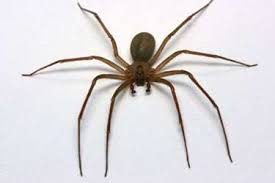
 Black Widow Spider: Known by their scientific name of Latrodectus mactans, these spiders are native to North America and are identifiable by their black colour with a red dot marking on their abdomen.
Black Widow Spider: Known by their scientific name of Latrodectus mactans, these spiders are native to North America and are identifiable by their black colour with a red dot marking on their abdomen.
Sexual cannibalism is prevalent with this species of spiders where the female tend to eat their male after mating, hence the name widow gets associated with this species. To avoid getting eaten after mating, males select their mates by inspecting the eating habit of females.
They can detect sensing chemicals in female webbings, whether the female had fed. A failure in ascertaining the behaviour leads to the death of male and eaten up by the female. Male black widow spiders tend to select their mates by determining if the female has eaten already to avoid eaten themselves.
The presence of neurotoxin named latrotoxin in their venom makes them dangerous. Their sense of sight is poor and depends upon vibration for ascertaining a threat. This results in severe muscle spasms and abdominal pain and may last up to several weeks.
The user feels dizziness and laziness along with fever depending upon the amount of venom the spider has injected. Before 1980 there were lots of deaths reports due to the bite of the black widow in America.
After the anti-venom, was discovered the number of deaths had decreased rapidly. Black widows are not aggressive spiders, and they rarely bite humans unless startled or otherwise threatened.
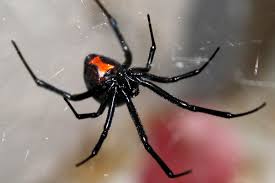
 Brown Widow Spider: Known by their scientific name Latrodectus geometricus, the brown widow spider is also a native of North America. They are a close relative of the black widow spider and are brown.
Brown Widow Spider: Known by their scientific name Latrodectus geometricus, the brown widow spider is also a native of North America. They are a close relative of the black widow spider and are brown.
They are however much smaller than the black widow spiders and can easily crawl into small places and can increase their numbers quickly.
Their venom is much more potent than that of a black widow but due to their smaller size, the amount of venom injected is less hence has less effect than that of the black widow. Only female brown spiders bite only when threatened, they are shy and avoid conflicts.
The bite of this spider causes nausea, dizziness and fever. Leave a puncture hole in the area with immense pain. Applying ice reduces swelling, rush to a doctor to get in the anti-venom.
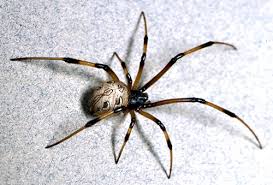
 Six Eyed Sand Spider: Known by the scientific name of Hexophthalma hahni, they are the natives of the South African desert.
Six Eyed Sand Spider: Known by the scientific name of Hexophthalma hahni, they are the natives of the South African desert.
They prefer a sand habitat for their living, they are not exceptionally good web weavers so they hide in the sand and pour sand over themselves with the help of their legs and wait for prey to cross their path.
When prey arrives, they pounce on them and inject their venom comprising of hemolytic and necrotic paralyses the prey within minutes.
Due to their extreme habitat, they are do not cross their paths with humans. There have been two reported deaths caused due to their bite.
The venom with a hemolytic is able to break open the red blood cells and release the haemoglobin into surrounding vessels causing immense tissue destruction and death of living cells around the area. There is no anti-venom for this spider’s bite.
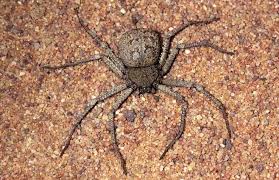
![]() Male Sydney Funnel-Web Spider: Known by the scientific name of Atrax robustus, they are native of eastern Australia and live within a radius of 160 km around Sydney. These spiders are very good swimmers.
Male Sydney Funnel-Web Spider: Known by the scientific name of Atrax robustus, they are native of eastern Australia and live within a radius of 160 km around Sydney. These spiders are very good swimmers.
Their name derives from the fact that they prepare a dense web in the shape of a funnel and reside at the centre of the funnel and wait for their prey. Their body ranges up to 5 centimetres long.
Their prey includes frogs, lizards and insects that come across its path by injecting them with their potent venom. Only male spiders are loaded with venom, female spiders are less toxic.
This spider has the most potent venom that can kill a human in a short time unless anti-venom is provided. The patient needs to rush to the hospital and provided two vials of anti-venom.
Symptoms like muscle spasms, diarrhoea and vomiting start within 15 min after being bitten. There have been 19 reported deaths reported by the bite of this spider. After discovery of anti-venom, no further deaths have been reported.
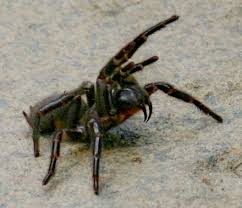




 (3 votes, average: 3.67 out of 5)
(3 votes, average: 3.67 out of 5)


